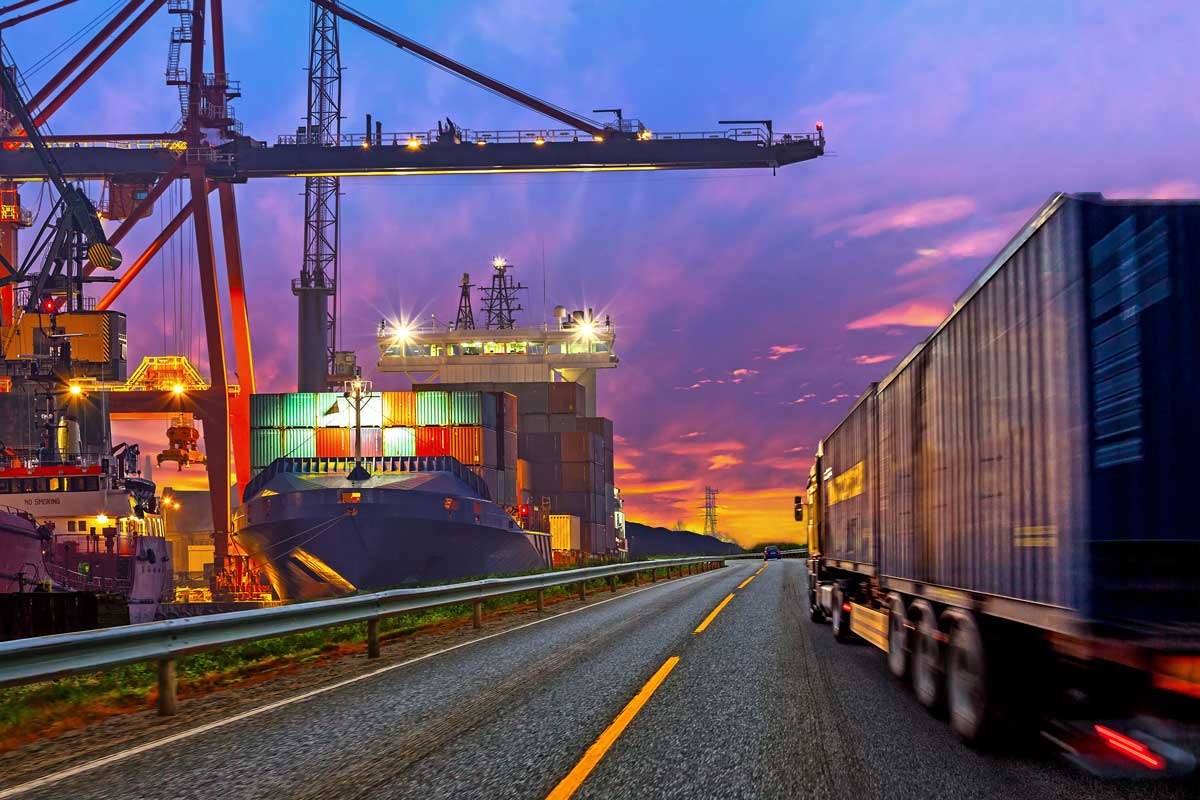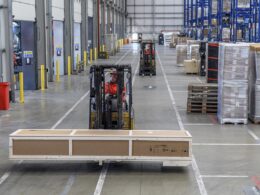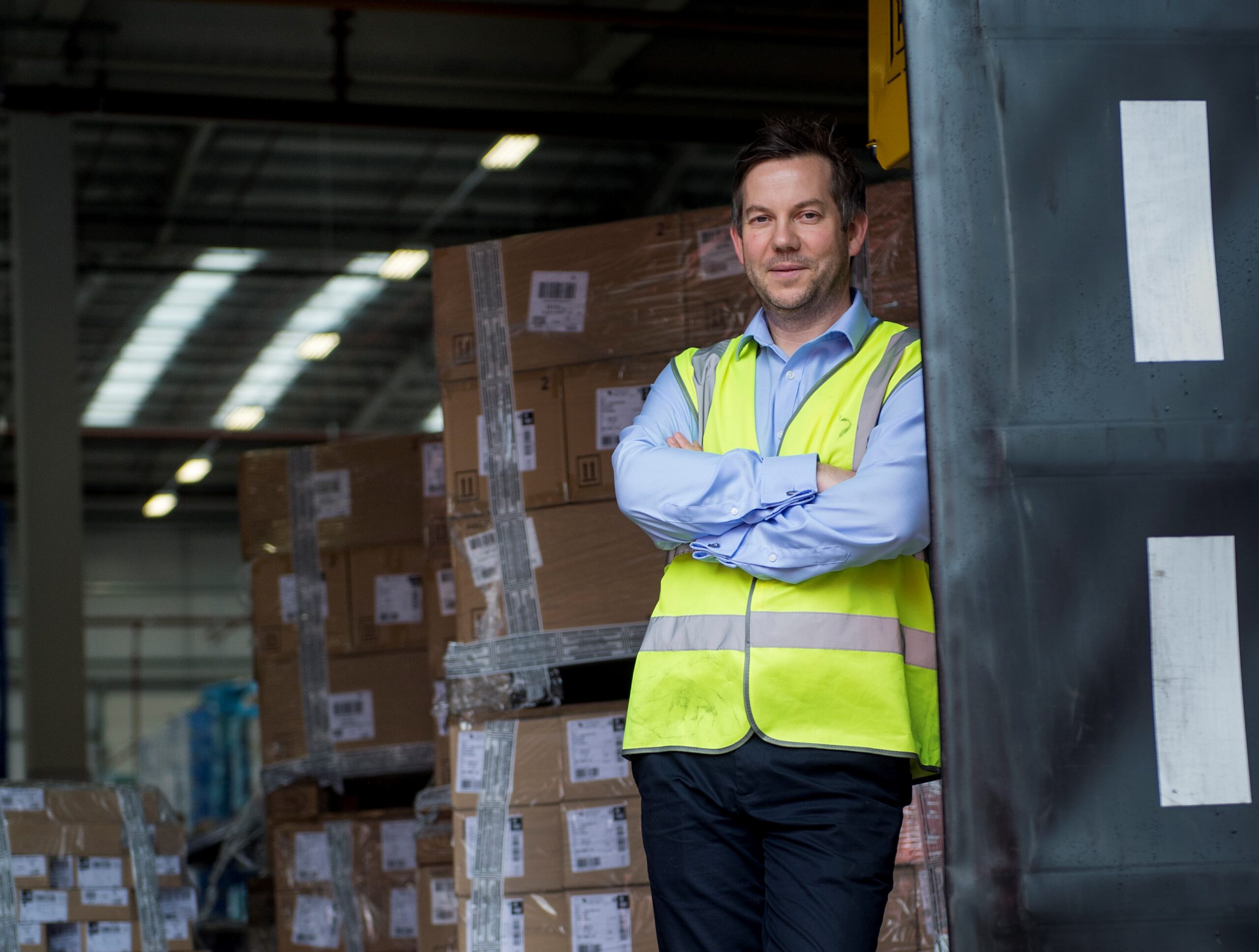As the backbone of so many industries, logistics is rapidly moving up the boardroom agenda. CXOs are focusing on the latest logistics technology trends as a way to speed up deliveries, enhance the customer experience, improve loyalty and ultimately gain a competitive edge.
Some technology trends that are already making waves in the logistics space include robotics, AI and Machine-Learning algorithms – and more recently Google Glass and drones. Looking ahead to 2018, here are my thoughts on what to expect: [sociallocker]
- Blockchain:Blockchain is set to revolutionise the logistics/supply chain industry. It offers an unhackable way to share information between parties because it creates a permanent, digital public ledger of transactions. It has the potential to bring greater transparency and data sharing across the supply chain, improve order tracking, reduce errors and enable better fraud detection. Plus the promise of huge cost savings.
In the US, Walmart has already announced it is piloting Blockchain technology to see whether it can help to identify the source of bad food in the supply chain, while the Blockchain in Trucking Alliance (BiTA) is adding members such as UPS and developing industry standard protocols for the use of Blockchain in the supply chain.
Use cases are many and varied: from helping to preventing ‘fictitious pickup’ thefts due to its strong security credentials, right through to food traceability applications in which information from sensors or RFID tags is recorded on the Blockchain to track fresh food from the field to the table.
Consumers will benefit too: products will arrive more quickly and could be cheaper as part of the cost savings will be passed on to them.
- Choice of Delivery In 2017 we saw a handful of eCommerce companies pushing ahead and letting their customers choose which logistics company they would like to deliver their orders. We expect more companies to adopt this approach in 2018, which will put pressure on parcel and courier companies to differentiate themselves from their competitors and ensure their service offerings are the best. A good parallel is in the telecom industry: when mobile number portability was first introduced, making it far less onerous to swap between mobile operators, the operators had to up their game by improving customer service and reducing their prices to retain customers.
- The rise of elastic logistics: Elastic logistics will be adopted by a considerable number of businesses in 2018 to help boost the customer experience; other benefits of adopting this approach include real-time visibility, fully integrated business processes, and far greater agility & scalability. catering to more demand with minimal disruption and enhanced customer experience. Businesses also achieve real-time visibility, fully integrated business processes, and far greater agility & scalability to operations. Elastic logistics essentially means having the flexibility to expand and shrink capabilities to align with the demands at any given time. Flexible automation solutions increase the agility and elasticity of the logistics infrastructure to cost effectively meet market fluctuations and can be used in areas such as cost control, warehouse management, geography limitations, distributions channels, priority deliveries, and much more.
- Perfect Order deliveries: Last-mile delivery is a tough nut to crack. Today delivery companies measure efficiency but more than anything else they must ‘measure’ customer satisfaction. In 2018, we will see a move towards more couriers/postals focusing on this qualitative satisfaction measure, as a way of helping to improve their Delivery Happiness Score. Perfect orders are the ultimate measure of customer satisfaction. It refers to the orders delivered to the right place, with the right product, at the right time, in the right condition, in the right package, in the right quantity, with the right documentation, to the right customer, with the correct invoice.
This can be done with a mobile app that allows tracking jobs and customer feedback in real time. This data is linked to an analytics dashboard back at warehouse that can be queried in real time by managers. It will tell them, for instance, who the best delivery workers are, and which regions have the most satisfied customers.
- Drones and smart glasses: Incorporating smart glasses and augmented reality into the logistics process in 2018 will transform deliveries. Benefits include: hands-free route searches, facial recognition for error-free deliveries and more personalized delivery options such as two hours delivery, parcel shop delivery, locker delivery etc. We will also see a big increase in drone adoption as a way to speed up deliveries in congested areas.
- Anticipatory logistics: Anticipatory logistics uses big data-based predictive algorithms to shorten delivery times by predicting demand before a request or order is even placed. In 2018, companies will analyze location-based searches, social media conversations, and pre-launch reviews to anticipate demand products in a specific region and start shipping goods to a local hub in advance. So, an online book retailer could use predictive algorithms to analyse any regional surges in online searches in relation to a new book due to be published next week and use this insight to ship extra copies to relevant local hubs to capitalize on this opportunity.
- Intelligent auto-routing: As companies strive to achieve greater efficiencies across the supply chain while also reducing carbon emissions, we will see a rise in demand in 2018 for digital logistics technologies that enable intelligent auto-routing. Using a mix of AI and machine-learning algorithms, auto-routing systems help to optimise route planning, taking into account the time of day, traffic conditions, vehicle type and capacity utilisation, the number of shipments that have to be delivered within a specific area, and the number of available drivers etc. These systems also consider customers’ preferred time-slots and have the ability to self-learn optimal routes based on historical data.
In summary, the overall trend over the next 12 months will be a move towards further simplifying and streamlining complex processes, not only to eliminate mundane and repetitive tasks but also to enhance the efficiency and effectiveness of the organisation in order to deliver the ultimate customer experience.
Kushal Nahata, Co-Founder & CEO, FarEye
[/sociallocker]












